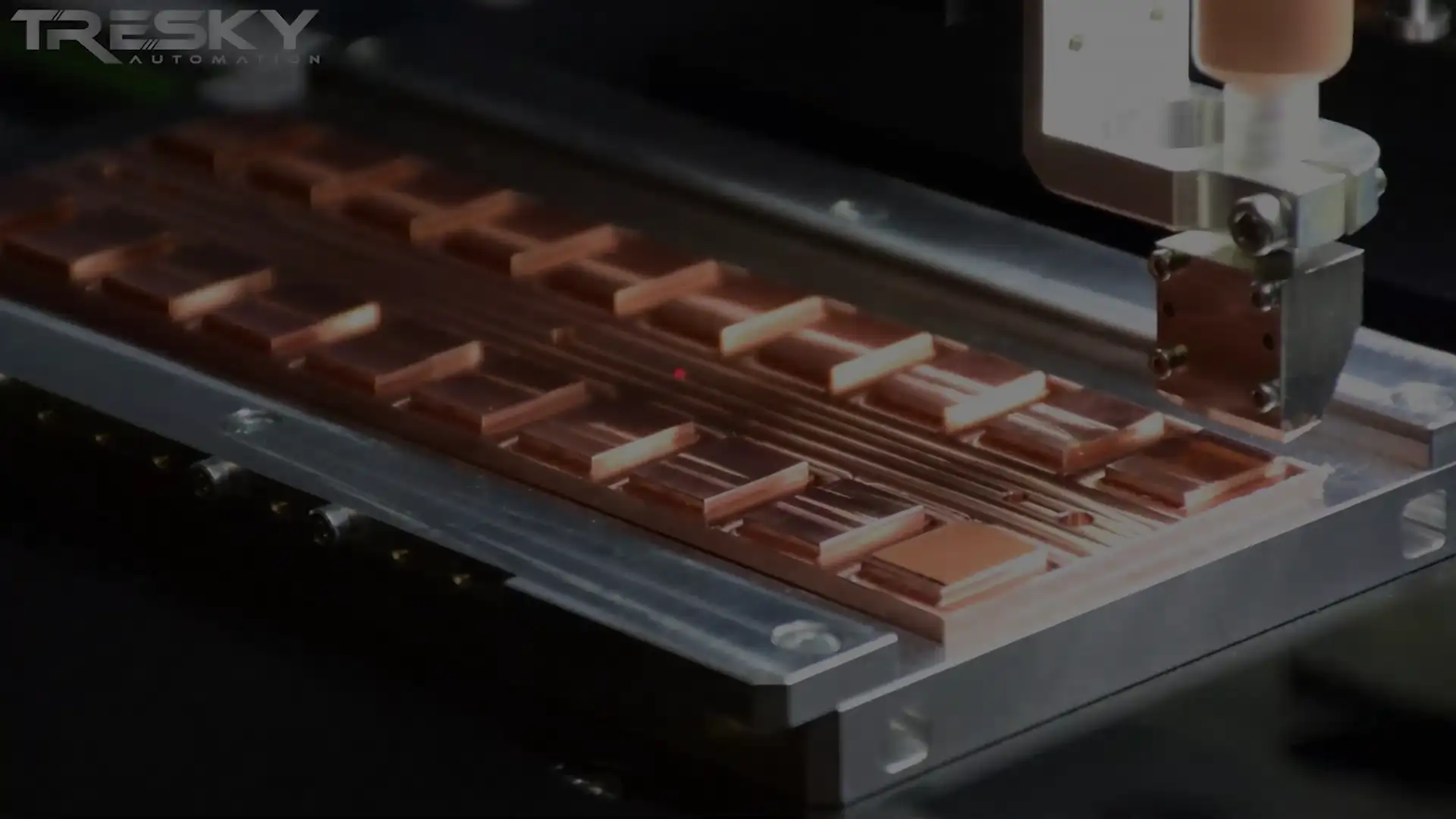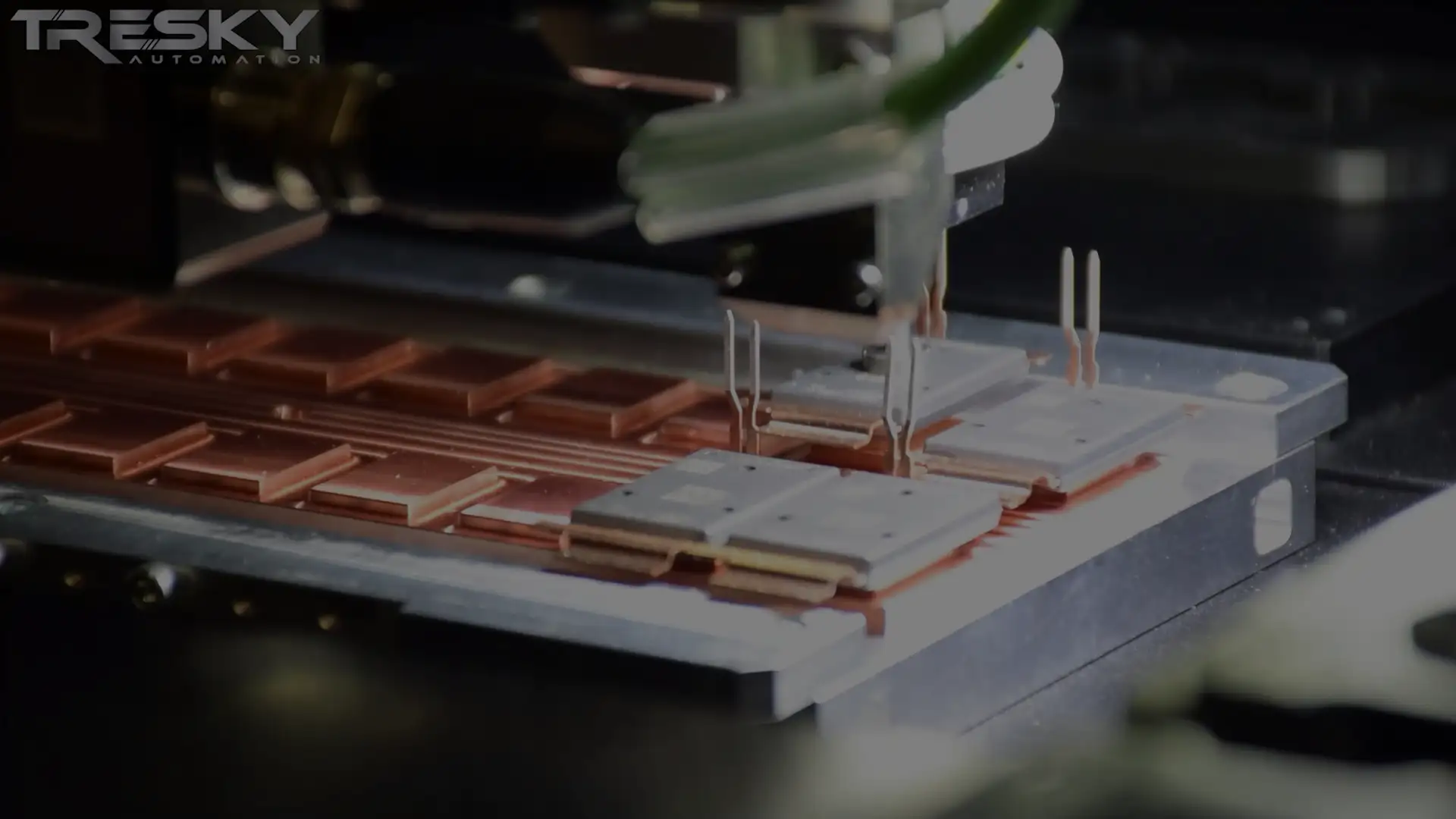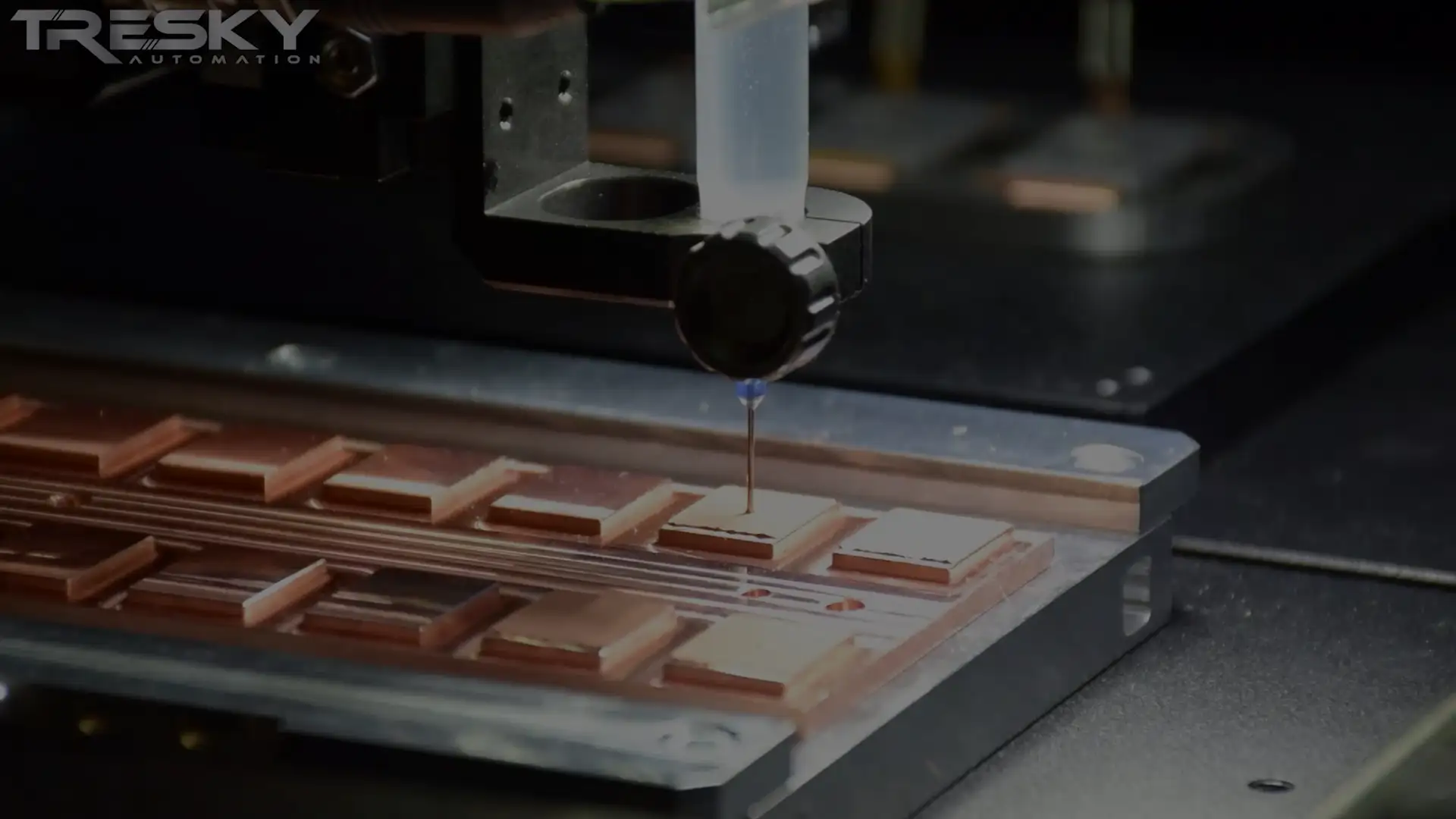For bonding semiconductors, such as IGBTs or SiC MOSFETs with Ag or Au on DBC or AMB substrates or for connecting power modules on heat sinks, metallic silver or copper sintering offers a high-performance solution with maximum reliability. If you are considering sintering as a bonding process, we offer you comprehensive solutions, from consulting, feasibility studies and process implementation to extensive after-sales support.
Our process consulting and training services help you to holistically evaluate manufacturing by means of metallic sintering and to derive the process selection and parameters for the production of your end products. Take advantage of our 20 years of experience in the fields of electronics, semiconductor and battery production. We actively support you in the development up to the series production of your products.
We have developed a number of pre-processes for sintering that contribute to cost and effort reduction of the overall process. These include hot mounting or tacking of semiconductors, but also dispensing of sintering paste and force-controlled placement of semiconductors or modules on heat sinks. These processes can be adapted to production specifications and product configurations. If this is not sufficient, we develop individual processes, as we have been doing for the semiconductor industry for years.
If sintering is your favoured assembly and connection technology, for example in a power module project for e-mobility, we will be happy to support you in the selection of the individual steps, according to your end product, the production volume and the specified cost framework. Based on this evaluation or assessment, we can make suggestions about changes, structure and process optimization and thereby reduce the time-to-market.
We carry out feasibility studies for you in our application laboratory. We check the overall solution approach with regard to technical feasibility and application. Depending on whether you want to use metallic sintering for bonding semiconductors to circuit carriers or circuit carriers are to be sintered to base plates, there are different process requirements.

Unprocessed substrates and SiC MOSFETs can be transported simultaneously into the sintering bonder, by using a two conveyor systems. In this way, the feeding of additional SiC MOSFETs as well as the removal of finished packages can take place automatically and with optimized cycle times.

The SQ-Nozzle developed by Tresky allows a sequential and very precise large-area application of deposits of silver or copper sintering paste. The paste is applied to each substrate in one process step, whereby defined layer heights and thicknesses can be applied, which are controlled by measuring the layer thickness.

By means of a triangulation laser, the layer thickness of the applied sintering paste is measured without contact. In the process, a distance measurement is carried out by calculating the angle. This guarantees that the dispensing applies the predefined amount of paste and thus reproducible sintering results are achieved.


To prevent the SiC MOSFETs from slipping from the sinter bonder during transport to the sinter press, an alcohol-based tacking agent is applied. This evaporates without leaving any residue during the sintering process.